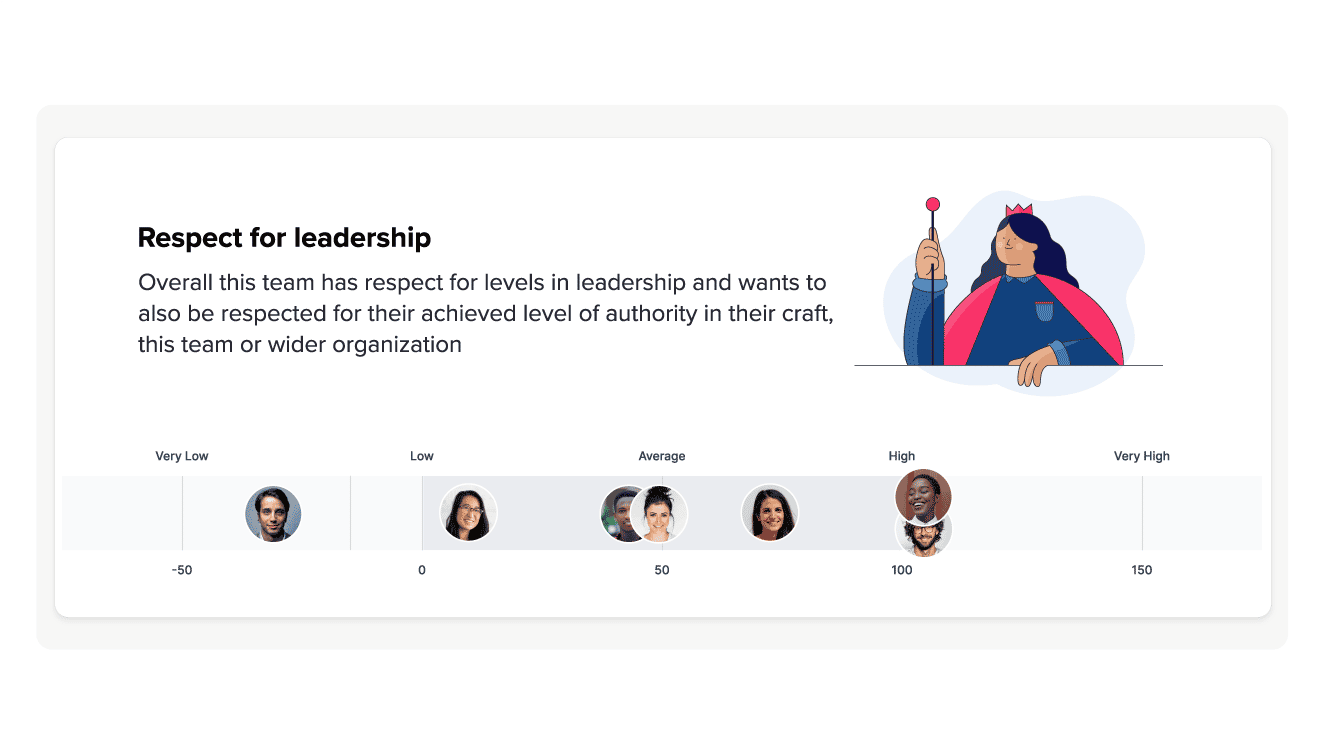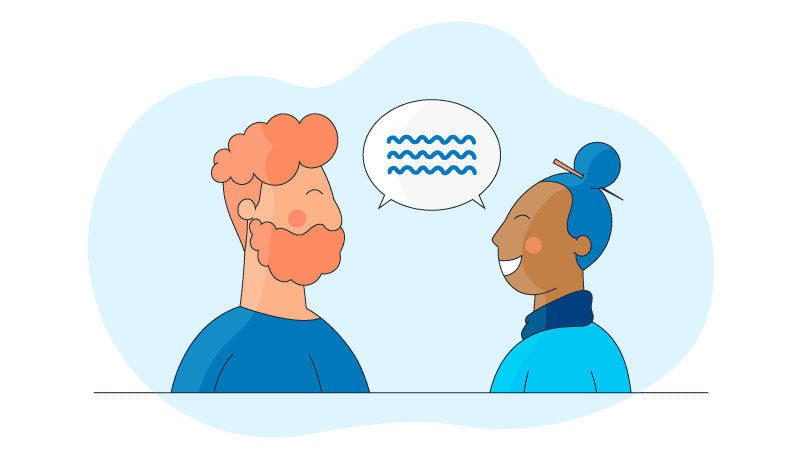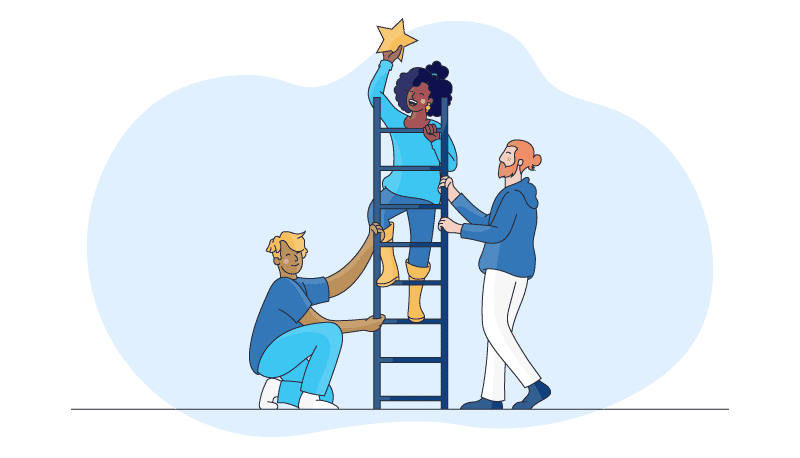Rethinking “cultural fit” (in 21 interview questions)
Cultural fit has long been a key factor in hiring decisions. But is it still relevant?
The answer is complicated. Cultural fit still matters, but to put it bluntly, many companies have it back to front. In the past, culture fit has referred to hiring a team of similar people, who ‘fit’ a certain mold. This often resulted in cognitive, gender, or ethnically homogenous groups who were prone to bias and blind spots.
Culture fit is still important, but consider what you mean when you say fit, and what, exactly, you want new hires to fit into. Rather than looking for new hires who fit a mold, you should look for candidates who fill gaps in your workplace culture. This reduces organizational silos, increases diversity, and builds a more vibrant company culture.
With this new take on the hiring process, it's necessary to make some adjustments to your culture-fit interview questions. F4S has put together this guide to help you get started.
What is a cultural fit interview?

Traditionally, a cultural fit assessment or interview is a part of the job interview process where an employee is assessed for their fit within a given organizational culture.
The aim is to determine the candidate's personality traits or core values, and whether they align with company values and the rest of the team. During this part of the interview process, candidates may be asked questions about their personal values, approaches, and how they would handle specific workplace scenarios.
With this information, hiring managers make a judgment as to whether the employee will integrate into the company culture, and will use this information as part of their hiring criteria.
The issue isn't that cultural fit is no longer important. Companies often fall into error when they preference sameness over difference in hiring decisions, which can lead to issues down the track.
The challenges of assessing cultural fit
Birds of a feather flock together, right? Many hiring managers abide by this maxim when putting together a team. They do so because they believe this will create a positive work environment and that it will limit the stressful situations that arise with a team of people who think and work in different ways. But, just because it's easy doesn't mean it's the ideal work environment. In fact, it's quite the opposite.
Research has shown that homogenous teams may have fewer conflicts but often perform worse. Building a diverse team can cause more friction, but without friction, you can't create fire. It's the friction of different people with different temperaments, motivations and personalities bouncing against each other that leads to innovation, and this is the real culture fit that matters.
While yes, it's necessary for teams to have strong interpersonal skills, as well as strong communication skills to work effectively within a diverse team, and it's often necessary to ask behavioral questions to determine these skills, diverse teams are still worth the effort.
The question to ask yourself when assessing a job candidate for culture fit is: Will this person contribute to a richer, more cognitively diverse workplace? Do they have soft skills, personality traits, or career goals that will complement, rather than mirror that of your current team?
When it comes to achieving business goals, diversity, not sameness is the right approach when hiring for cultural fit.
3 risks you take when you build a team around cultural fit
When taking the traditional approach to cultural fit, here's what could go wrong:
Blind spots
Hiring ‘mini-mes' can reinforce poorly thought-out assumptions, and prevent those assumptions from being tested and challenged. This is how team blind spots and unconscious biases are formed. It happens easily, and is hard to detect. After all, who is going to call you out on your blind spots when you're surrounded by people just like you?
Many organizations have these kinds of cultural blind spots. This is often a byproduct of bad practices in hiring that preference traditional ideas of cultural fit.
Team structural flaws
Overly homogenous teams can be fragile as they lack the means to handle disagreements in a professional, positive way (and grow from the experience). If the team members are too similar and have developed friendships outside of work, it becomes even harder.
People don't want to argue with their friends, especially over deliverables. When you remove the ability to challenge and hold each other accountable, team development can be skewed.
Lost creativity

As above, you can't make fire without friction. Nothing novel, outside of the box, and therefore, valuable, can be created without different ideas, opinions and styles colliding. It may be slightly more chaotic, even difficult, but this is where the magic happens. Creativity is not an orderly, or easy process. It is, however, vital for organizational success.
By building a team around cultural fit in the traditional sense, you're blocking the very engine of creativity in favor of ease and efficiency.
How to prepare culture fit questions for your next interview
Hiring for this new concept of cultural fit is, more or less, the opposite of how it's done in the traditional sense. This means that the way you ask cultural interview questions needs a rethink.
Instead of formulating questions to find out how the candidate's personality, or whether their values mirror that of your current team, you need to look at your culture map (talk to the team at F4S about setting one up). Find out what is missing and who the perfect candidate is to fill the gap.
Ideally, all bases will be covered; and you’ll have a team that runs the full gamut of motivations, cognitive styles and soft skills needed to make your company stronger. The one thing that each candidate does need, is the ability to work with people who approach their work differently and hold diversity of approach as a core value.

Ideas for smarter cultural fit interview questions
Now that you've assessed what gaps need to be filled in your organizational culture, here is a list of culture interview questions to ask your next round of potential employees, to help you land more successful hires.
Teamwork-related questions
- In your previous role, can you share an example of a project or situation where you had to collaborate with a diverse team to achieve a common goal? How did you contribute to the team's success, and what challenges did you encounter along the way?
- Teamwork involves effective communication. In your professional career, how do you ensure that information is shared transparently and consistently within your team? Can you provide an instance where your communication skills made a significant impact on a team project?
- How do you handle disagreements or conflicts within a team? Can you provide an example of a time when you had a differing opinion from a team member? How did you resolve it to maintain a positive and productive working relationship?
Problem-solving skills questions

- From your previous work experiences, can you describe a specific instance where you had to work with a diverse team to solve a complex problem? How did you handle any challenges related to communication or collaboration?
- Describe a situation where you had to adapt to a changing team dynamic or project scope. How did you handle the situation? What did you learn from it in terms of team problem-solving?
- Give an example of a time when you encountered a team member with a conflicting perspective during a project. How did you address the disagreement, and what was the outcome?
Leadership questions
- In your view, what are the key elements that contribute to a high-performing and motivated team? How do you foster these elements with your management style?
- Can you provide an example of a time when you successfully built a cross-functional or cross-departmental team to achieve a common goal? What strategies did you employ to ensure effective collaboration and a cohesive team culture?
- How would you describe your leadership style and its impact on building a positive team culture and employee morale? Can you provide an example of a situation where your leadership positively influenced employee morale?
Values and beliefs questions
- What core values do you consider most important in your professional life? How do they influence your decision-making and behavior at work?
- Can you share a specific instance where you took a principled stand or made a difficult ethical decision in your career that was aligned with your personal beliefs? What was the outcome of that decision, and what did you learn from it?
- How do you handle situations where there is a misalignment between your personal values and the values of your organization or team? Can you provide an example of when this occurred and how you managed it?
Communication skills questions

- Give an example of a time when you had to deliver difficult feedback or address a sensitive issue with a colleague or team member. How did you approach the conversation, and what steps did you take to ensure a productive and constructive dialogue?
- When it comes to communication styles at work, is it more important to stick to the facts, or is there room to be expressive and personable? (This is to determine whether or not the candidate is an Affective, or a Neutral Communicator).
- How do you ensure active and empathetic listening when interacting with team members, clients, or stakeholders? Can you share an instance where your listening skills were particularly beneficial?
Adaptability questions
- How do you stay updated with industry trends and adapt to new technologies or methodologies? Can you share a specific instance where your adaptability to emerging trends positively impacted your work?
- Describe a time when you had to work on a project with shifting priorities and evolving requirements. How did you manage to adapt and maintain your focus on achieving the project's objectives?
- Organizations value employees who can thrive in a diverse and multicultural environment. Can you give an example of when you successfully adapted to working with a diverse team, and how you contributed to a positive team dynamic in that context?
Work ethic and attitude questions
- How would you describe your personal work ethic? What motivates you to consistently perform at your best, even when facing challenges or tight deadlines?
- How do you handle workplace stress and pressure? Can you share specific strategies or techniques you use to stay focused and maintain a positive attitude in demanding situations?
- In a team environment, a positive attitude can greatly influence team dynamics. Can you give an example of a time when your attitude positively impacted your team's morale or helped resolve a challenging situation?
The F4S approach to culture fit interview questions
Want to take the guesswork out of hiring for culture fit? F4S can help. Use F4S to develop a culture map for your existing team, identify the gaps and use this data to make smarter hiring decisions.
F4S's proprietary measure of workstyle motivations is based on more than 20 years of evidence-based research, and has helped companies such as Canva, Atlassian and KPMG to improve team culture, and make smarter hiring decisions.
Canva for example invites candidates to take the F4S assessment as part of the onboarding process. This allows the hiring team to optimize team fit and discuss any blind spots that may require development.
-min.gif)
Here are some examples of the workstyle motivations, and how to formulate interview questions the F4S way.
Action direction questions
Action direction refers to whether an individual is motivated by goals, (Goal Orientation), or motivated to avoid problems (Away From Problems). A successful company culture needs both of these traits to get things done, and avoid and mitigate risks.
Here are some basic questions to get you started:
Let's say that, after assessing your culture map, you've determined that your current culture is full of goal-oriented go-getters, but you don't have enough cautiously-minded people to keep their eyes peeled for risks. Here are some questions to ask to determine culture fit:
- At the previous company you worked for, how did you balance risk and caution in your decision-making? How do you adapt to different work environments or industries?
- In your previous role, describe a time when you had to deal with a complex problem that required a deep understanding of the issue. How did you approach researching and analyzing the problem? What were the key insights you gained in the process?
- When working on a project, how do you ensure you are continually evaluating and identifying potential risks or roadblocks? Can you give an example of a situation where your vigilance in spotting problems early on prevented a more significant issue later in the project?
Responsibility questions

Responsibility refers to an individual's tendency to assume Sole Responsibility for their work, or share responsibilities throughout the team (Shared Responsibility). These traits often denote an individual's approach to teamwork. Depending on the job requirements, or the existing corporate culture, or company objectives, candidates with either of these traits may be the right hire.
Here are some open-ended questions to get you started.
- Can you describe a recent project where you were part of a team? What was your role, and how did you collaborate with others to achieve project goals?
- In your previous job role, what were your preferred approaches to delegating tasks within a project or team? Can you give an example of a time when you effectively delegated responsibilities to others while maintaining overall accountability for the project's outcome?
- When working in a team, how do you handle situations where there is a need to take charge and provide strong leadership versus when it is more appropriate to distribute responsibilities evenly? Can you provide an example that illustrates your ability to adapt to different leadership and ownership scenarios?
Authority questions
Authority refers to an individual's tendency to trust their own intuition and make decisions and appraisals based on gut feel (Internal Frame of Reference) as opposed to asking questions and doing research (External Frame of Reference). A balance of both tendencies can be important aspects of company culture. Getting the balance right matters.
Here are some open-ended questions to get you started.
- When faced with a complex decision, what is your typical decision-making process? Do you rely more on your intuition and gut feeling, or do you prefer to gather and analyze data and information before making a choice?
- How do you balance the need for quick decision-making in a fast-paced environment with the desire to make well-informed choices? Can you share a situation where you had to make a rapid decision and how you handled it?
- In your experience, what types of decisions do you believe are best made through research and analysis, and which are better suited for relying on your intuition or gut instincts? Can you provide examples that demonstrate your thought process in these different scenarios?
Hold smarter culture fit interviews with F4S
If you want to take your current culture to the next level, F4S can help. By removing the guesswork, and making precision hires based on data and evidence, strong culture fit is easy, and your team will flourish. Join a host of smart, innovative companies such as Canva, Atlassian and KPMG who leverage F4S tools. From making better hires, to improving team cohesion, productivity and creativity. Get started with a fun, easy and short assessment, today.
Recommended program for you:
Coach Marlee (your amazing AI-powered personal coach) will analyse your unique traits and goals to personalize the program so you see results as quickly as possible.
Testimonials

"The resources are awesome, I have referred back to them multiple times"

“Coaching with Marlee was simply amazing. 200% recommend!”

“I found the importance of setting goals. It’s a mindset”

“Awesome and effective coaching program of helping to increase motivation for goal challenged people. Fallen in love with goals and looking forward to more BHAGs. Highly recommend the coaching for GoalCatcher!”

“The only way to move ahead is to work out the next action and then schedule a time to do it!”

“The Trust Your Gut coaching program with Marlee was simply amazing. It really helped me to reflect on my decision making style in a new light and boosted my confidence. I 200% recommend!”

"The resources are awesome, I have referred back to them multiple times"

“What an awesome way to get better at collaborating with my teammates! Thumbs up Marlee!“
Related Articles
What’s your communication style?
Learn how to connect with colleagues and boost workplace motivation.

Name Surname
Position, Company name

Name Surname
Position, Company name

Name Surname
Position, Company name

Name Surname
Position, Company name

Name Surname
Position, Company name

Name Surname
Position, Company name
Your submission has been received!

Hack your wellbeing, productivity and goals
Programs are created by expert coaches & delivered by our incredible A.I. Coach Marlee. Sessions only take 5-15 minutes and are 100% personalized to fit your unique traits and goals.
